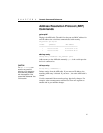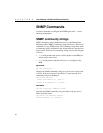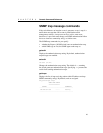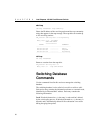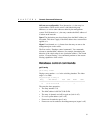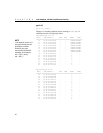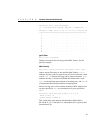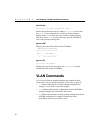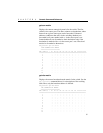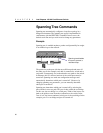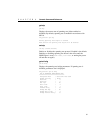
54
CHAPTER 3
Intel Express 10/100 Fast Ethernet Switch
get-lt-age
Displays the switching database aging time in seconds. This is the
amount of time the switch stores a device’s MAC address before
clearing it from the database. An entry whose MAC address doesn’t
appear in the source field of an incoming packet for this period of
time is discarded. The default is 300 seconds.
SYS_console> get-lt-age
The running aging time is: 300 seconds
set-lt-age
set-lt-age {run|nvram|all} <aging_time>
Modifies the switching database aging time.
The
aging_time is in seconds with a default of 300 seconds and a
range of 10 to 11,000 seconds. Decrease the time if the number of
active workstations is larger than 1024.
SYS_console> set-lt-age run 280
Aging Period update in the running database OK
SYS_console> set-lt-age all 100
Aging Period update in NVRAM OK
Aging Period update in the running database OK
Custom filtering
Use custom filters to ensure a device can reach other devices
regardless of where the device is attached. For example, if you have a
laptop computer that acts as a management station, you want to make
sure you can reach your servers from anywhere on the network, even
from segments that have security VLAN restrictions.
The custom filter entry for an address displays onscreen as a matrix.
The source (SRC) column lists the available source ports (1 through
12, where ports 9 through 12 are for optional expansion modules
which may not be installed). The other columns each represent an
available destination port. A + represents a forwarding path. In the
following example, each source port forwards frames to port 5. (A +
isn’t listed in the P5 column because ports don’t forward frames to
themselves.)




